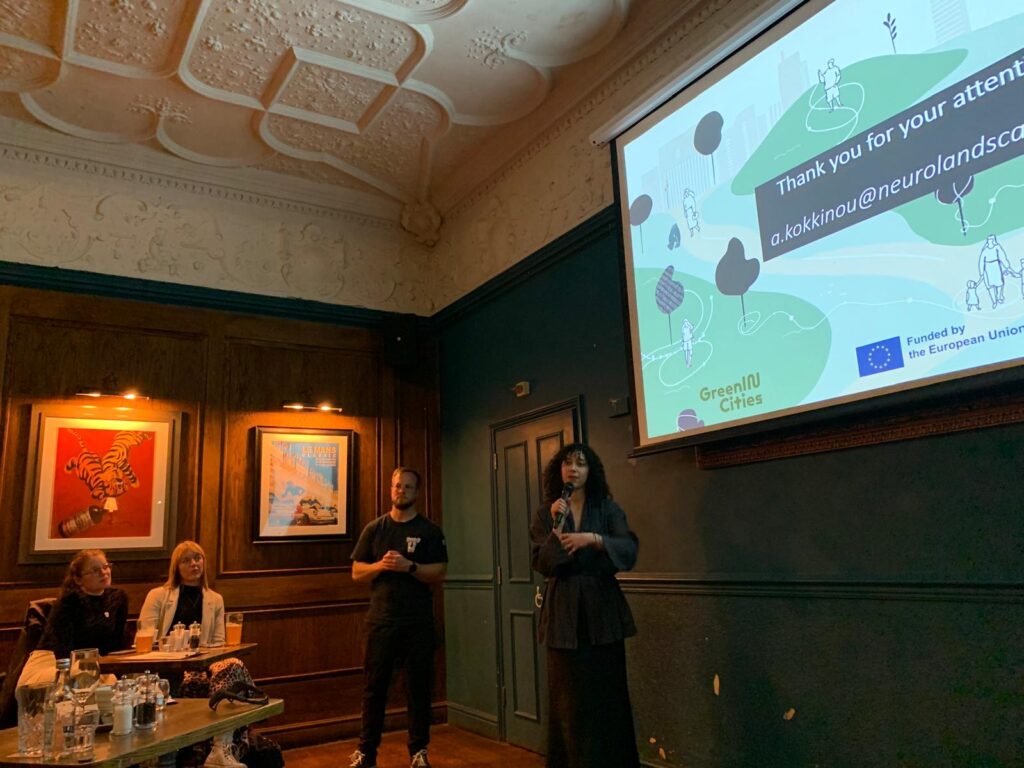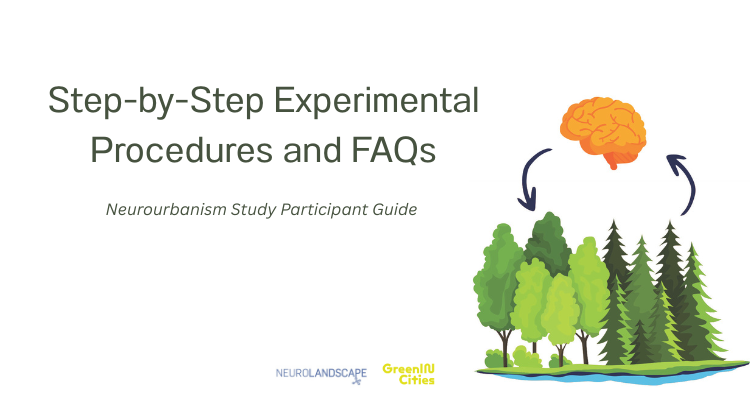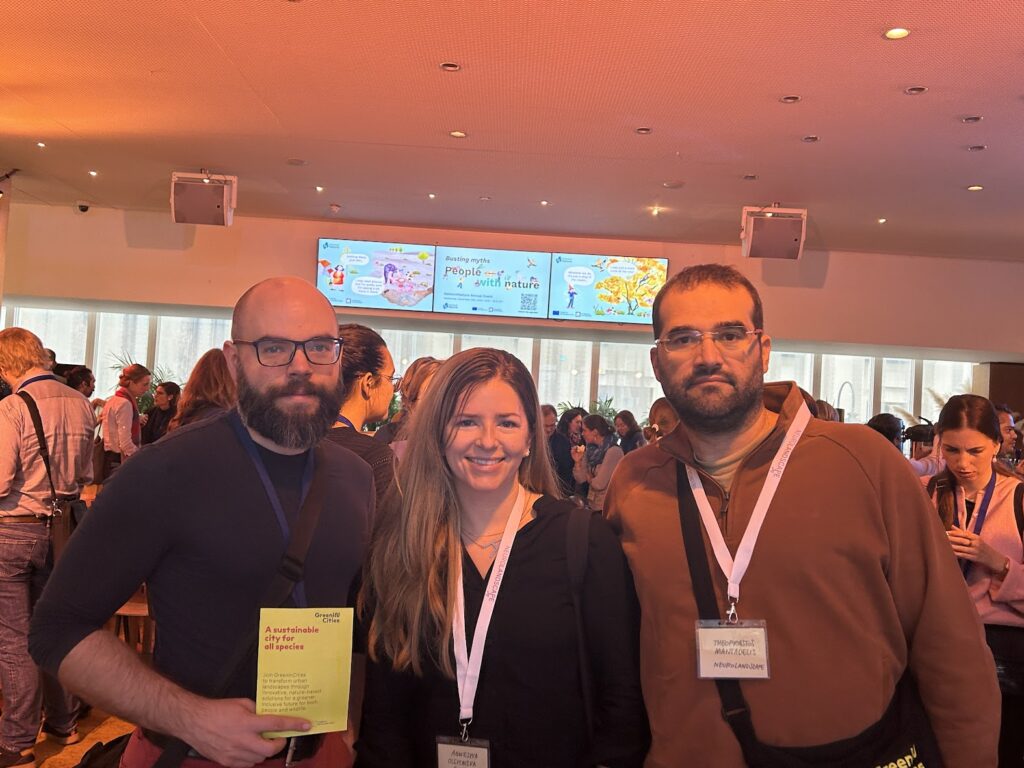We are launching the recruitment for participants of the Neurourbanism study in Helsinki for August 2025! Sign and and help up shape mental health and well-being!
Category: GreenInCities
Pint of Science in Exploration on How Cities Shape Our Wellbeing
On May 19, 2025, Anastasia Kokkinou from NeuroLandscape took the stage at Pint of Science in an engaging session titled “How Cities Shape Our Wellbeing.” The event brought together a curious audience with diverse academic backgrounds – from archaeology to cognitive neuroscience – sparking lively discussions on urban design and mental health. The tickets sold out way in advance so we were expecting Read More
Neurourbanism Assessment Step-by-Step Guide & FAQ
In the Neurourbanism study, we are measuring brain activity before and after what we call a “Nature-based Intervention” at specific sites. We have selected your neighbourhood as one of our study sites. We will collect data in two phases: first, before the intervention (in 2025), and then after (in 2027). Both times, we will be following Read More
Calling Nova Gorica locals!
Launching the recruitment for participants of the NUA study in Nova Gorica for April/May 2025! Sign and and help up shape mental health and well-being!
NeuroLandscape in Cork: GreenInCities Second Consortium Meeting
Cork, UK – October 8-9, 2024 Earlier this month, the NeuroLandscape team had the pleasure of attending the GreenInCities (GIC) Second Consortium Meeting in the vibrant city of Cork, Ireland. Hosted by the University College Cork (UCC) and Cork City Council, the two-day event gathered the international project partners to advance our shared mission: urban Read More
Network Nature Annual Event
NetworkNature Annual Event 2024 | Busting myths: People with nature 24-25 of September, 2024 | Brussels, Belgium The NeuroLandscape team just returned from an incredible few days at the NetworkNature EU Annual Event in Brussels! What a wonderful blend of insightful discussions, knowledge-rich myth-busting panels, and interactive hands-on workshops, all reinforcing the key message of Read More
How Urban Design Can Impact Mental Health & Well-being
Our cities are often designed with function in mind. We build parks for exercise, wider sidewalks for pedestrians, and bike lanes for commuters. While we have made progress towards building healthier bodies, we have overlooked the equally important mental well-being. Urban design has a powerful influence on the quality of its citizens’ life, especially mental Read More
GreenInCities Kick-Off Meeting: NeuroLandscape in Barcelona
NeuroLandscape was proud to participate in the Kick-Off meeting of the project Demonstrating Holistic Data-driven Co-Creative Approaches in Nature-based solutions towards Climate Adaptation and Mitigation (GreenInCities) (Project ID: 101139730) in Barcelona, Spain. This groundbreaking EU-funded project GreenInCities, brings together experts to revitalize disadvantaged neighborhoods and fight climate change. Their weapon of choice? Nature-based solutions (NbS) Read More
GreenInCities project: Reshaping Urban Well-Being through Nature-Based Solutions
The GreenInCities project tackles the challenge of bringing nature-based solutions to deprived urban areas to improve mental well-being. Learn how NeuroLandscape is contributing with innovative assessment methods. As urban areas expand and crowding surges, accessing green spaces has become increasingly challenging. The issue goes beyond aesthetics; studies consistently link access to nature with improved mental Read More









